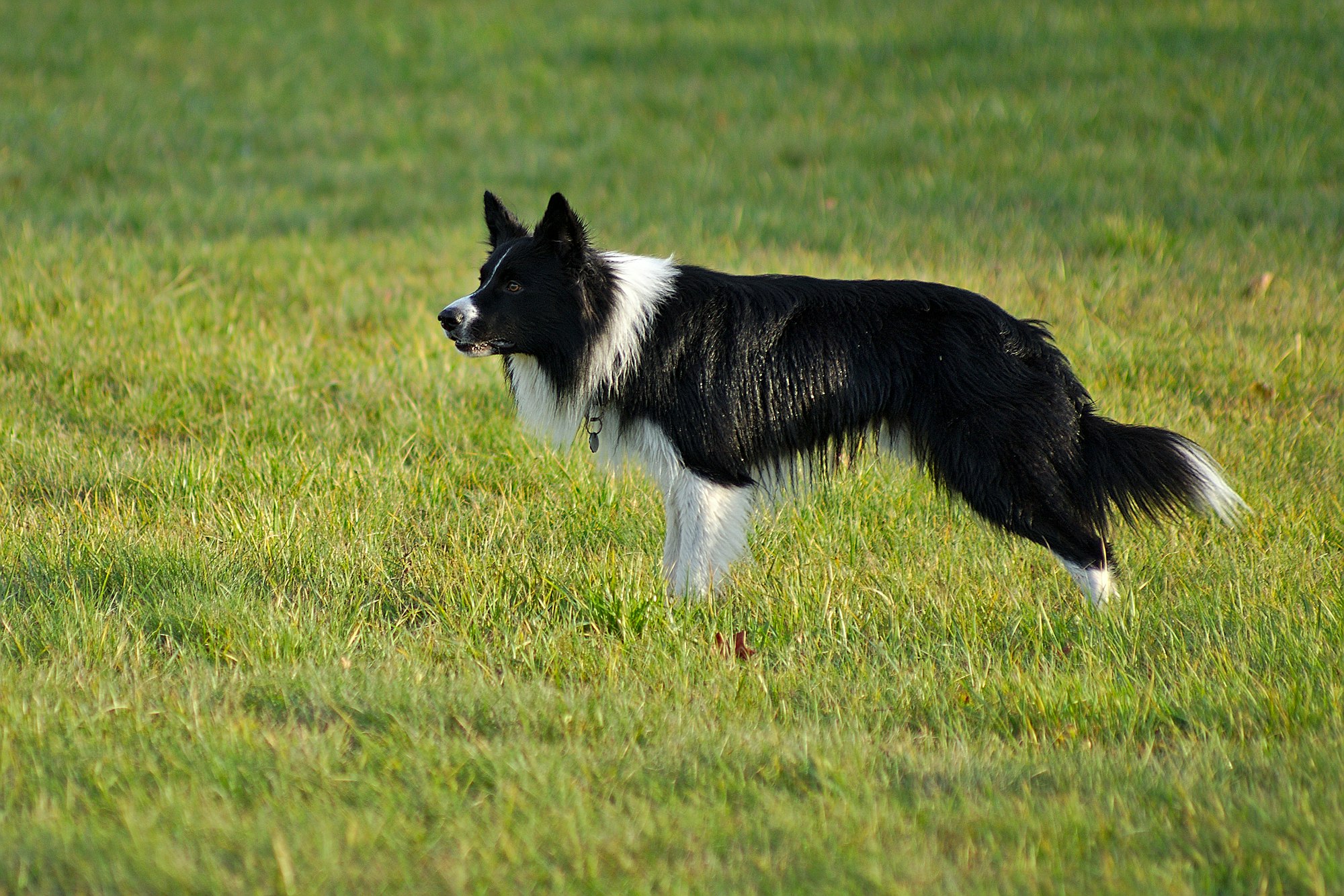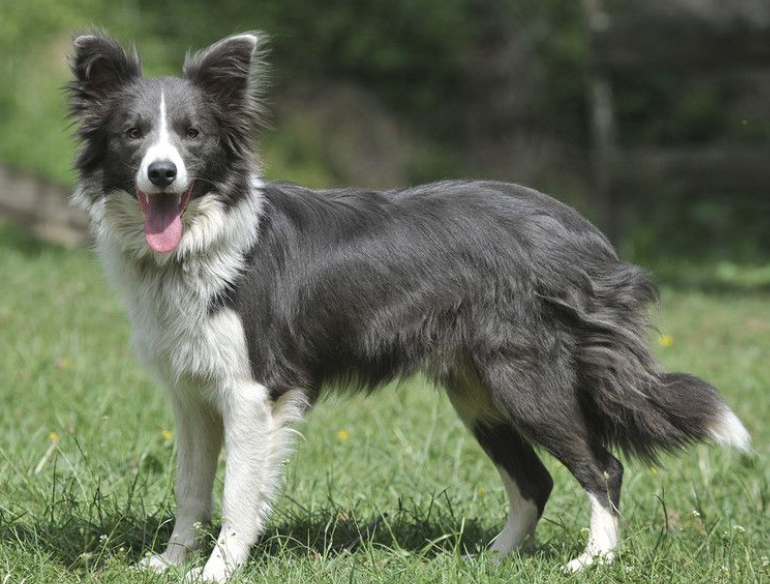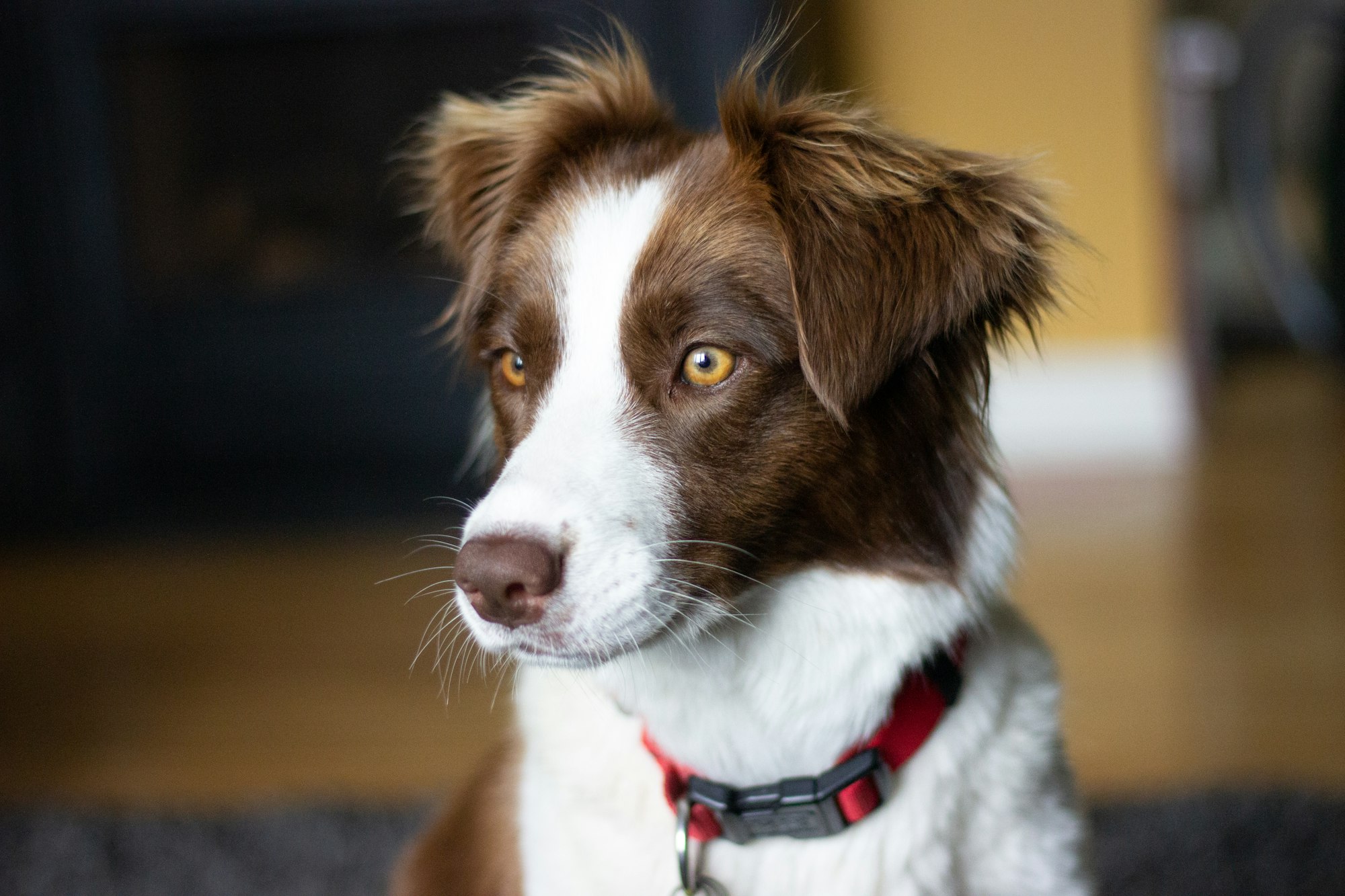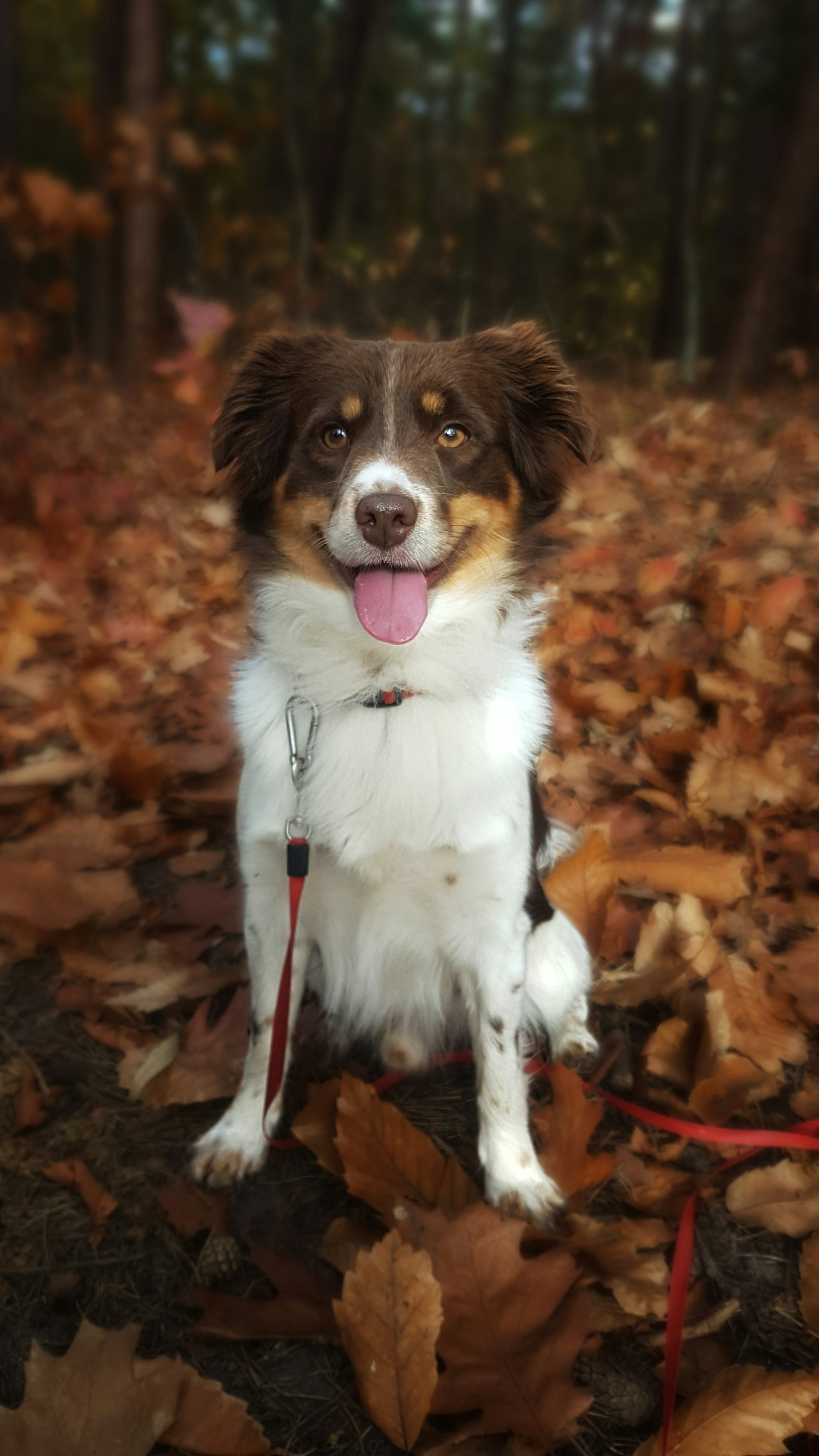Border Collies are one of the most popular dog breeds due to their intelligence, agility, and trainability. However, their coat colors are just as impressive. In this article, we will dive deep into the different Border Collie colors, including their variations, genetics, selection, and frequently asked questions.
Border Collie colors are not randomly assigned; rather, they are determined by their genetics. The Border Collie breed can produce a wide range of coat colors, ranging from black and white to rare colors such as lilac and chocolate. Generally, Border Collies have two coat colors, with one being dominant over the other. The dominant color is often black, red, or blue.
While Border Collies are well-behaved dogs, they are known to be quite adventurous and can easily wander off while exploring. To ensure that your furry friend is always safe and within reach, a Fi GPS dog collar is a must-have accessory. With its advanced GPS tracking technology, you can monitor your dog's location in real-time, set up safe zones, and receive notifications when your dog leaves the designated area.
The Color Variations of Border Collies
Border Collies come in a variety of colors and markings. The most common colors are black and white, but they can also come in other colors such as blue, sable, red, and chocolate. The color of a Border Collie is determined by their genetics, and several genes control their coat color.
Black and White Border Collies
Black and white Border Collies are one of the most common and recognizable colors in the breed. These dogs have a solid black coat with white markings on their chest, face, and paws. The black color is caused by the K (black) gene, which is dominant over the k (non-black) gene. This means that if a Border Collie inherits a K gene from one parent and a k gene from the other parent, it will have a black coat.
Black and white Border Collies are often referred to as "classic" or "traditional" Border Collies because they are the most common and traditional color in the breed. They are also known for their striking appearance and are often used in advertisements and media to represent the breed.
In terms of temperament and behavior, black and white Border Collies are no different from other colors in the breed. They are highly intelligent, energetic, and loyal dogs that excel in activities such as dog sports, obedience, and herding. They require plenty of exercise and mental stimulation to keep them happy and healthy.

Red and White Border Collies
Red and White Border Collies are a popular color variation in the breed. They have a base coat color of white with patches of red on their body. The red patches can range in shades from deep mahogany to a lighter ginger color. The red color is caused by the E (extension) gene, which controls the amount of black pigment in the hair. When a Border Collie inherits one copy of the E gene and one copy of the recessive e gene, it will have a red and white coat.
Red and White Border Collies may also have black markings on their coat, such as black masks or black patches. Like other colors in the breed, they are highly intelligent, energetic, and loyal dogs that excel in activities such as agility, obedience, and herding.
In terms of temperament and behavior, red and white Border Collies are no different from other colors in the breed. However, it is necessary to note that coat color is not the only factor that determines a dog's personality and behavior.

Blue Border Collies
Blue Border Collies are another common color in the breed. They have a solid blue-gray coat, often with white markings on their chest, face, and paws. The blue color is caused by the dilution of the black color, which is controlled by the D (dilution) gene. When a Border Collie inherits two copies of the D gene, it will have a blue coat.
Blue Border Collies are known for their unique and eye-catching appearance. They are often described as "steel blue" or "slate blue" in color and can range from light to dark shades. While they are not as common as black and white Border Collies, they are still a popular color choice among breed enthusiasts.

In terms of temperament and behavior, blue Border Collies are no different from other colors in the breed. They are highly intelligent, energetic, and loyal dogs that excel in activities such as agility, obedience, and herding. However, it is essential to note that some breeders have reported that blue Border Collies may be more prone to certain health issues such as skin allergies and deafness. Therefore, it is required to choose a reputable breeder and ensure that the dog is healthy and well-cared for.
Sable Border Collies
Sable Border Collies are another popular color in the breed. They have a coat that is a mix of black, tan, and/or white hair. The sable color is caused by the A (agouti) gene, which affects the distribution of pigments in the hair. When a Border Collie inherits two copies of the A gene, it will have a sable coat.
Sable Border Collies can have a range of appearances, from a lighter "blond" sable to a darker "mahogany" sable. They may also have white markings on their chest, face, and paws. Sable Border Collies are known for their striking and unique appearance, which can vary greatly from one dog to another.
In terms of temperament and behavior, sable Border Collies are no different from other colors in the breed. They are highly intelligent, energetic, and loyal dogs that excel in activities such as agility, obedience, and herding. Sable Border Collies may also have a more sensitive and gentle temperament than some other colors in the breed, making them a great choice for families with children or other pets.
Red Border Collies
Red Border Collies are very beautiful color variations in the breed. They have a rich red coat that can range in shades from deep mahogany to a lighter ginger color. The red color is caused by the E (extension) gene, which controls the amount of black pigment in the hair. When a Border Collie inherits two copies of the recessive gene, it will have a red coat.
Red Border Collies are known for their striking appearance and are often described as "redheads" or "coppers." They may also have white markings on their chest, face, and paws. Like other colors in the breed, red Border Collies are highly intelligent, energetic, and loyal dogs that excel in activities such as agility, obedience, and herding.
In terms of temperament and behavior, red Border Collies are no different from other colors in the breed. However, some breeders have reported that red Border Collies may be more prone to certain health issues such as hip dysplasia and skin allergies. Hence, it is critical to choose a reputable breeder and ensure that the dog is healthy and well-cared for.
Chocolate Border Collies
Chocolate Border Collies, also known as liver-colored or brown Border Collies, are the less common color variation in the breed. They have a coat that is a rich chocolate brown color, caused by the B (brown) gene, which affects the production of eumelanin pigment. When a Border Collie inherits two copies of the recessive b gene, it will have a chocolate brown coat.
Chocolate Border Collies may also have white markings on their chest, face, and paws. Like other colors in the breed, they are highly intelligent, energetic, and loyal dogs that excel in activities such as agility, obedience, and herding.
In terms of temperament and behavior, chocolate Border Collies are no different from other colors in the breed. However, some breeders have reported that chocolate Border Collies may be more prone to certain health issues such as skin allergies and eye problems. So, it is crucial to choose an admirable breeder and ensure that the dog is healthy and well-cared for.

Tri-Color Border Collies
Tri-Color Border Collies are a stunning color variation in the breed. They have a base coat color of black with patches of white and tan on their body. The tan patches can range in shades from deep mahogany to a light caramel color. The tri-color pattern is caused by a combination of genes, including the B (brown), S (white spotting), and A (agouti) genes.
Tri-Color Border Collies may also have other markings on their coat, such as a black mask or ticking (small black spots on the white areas of their coat). Like other colors in the breed, they are highly intelligent, energetic, and loyal dogs that excel in activities such as agility, obedience, and herding.
In terms of temperament and behavior, tri-color Border Collies are no different from other colors in the breed. Regardless, it is integral to note that coat color is not the only factor that determines a dog's personality and behavior.
Other Border Collie Markings
Apart from the base coat colors, Border Collies can have other markings that make them unique. These markings include:
Merle Markings: Merle markings are patches of lighter color on a darker base coat. This marking is the result of the Merle gene, which causes the pigment to be distributed unevenly.
Brindle Markings: Brindle markings are a mix of black and brown stripes on a lighter base coat. This marking is the result of the brindle gene, which causes the pigments to be distributed in a striped pattern.
Ticking Markings: Ticking markings are small spots of color on a lighter base coat. This marking is the result of the ticking gene, which causes the pigments to be distributed in a spotted pattern.

Choosing a Border Collie based on their Color
When choosing a Border Collie, it is important to focus on their temperament, health, and overall suitability for your lifestyle and needs, rather than solely on their color. While different colors and patterns may be appealing to the eye, it is crucial to remember that the dog's color is not the most vital factor in their quality as a pet.
Before bringing a Border Collie into your home, consider the breed's characteristics, such as their high energy level, intelligence, and need for mental and physical stimulation. You should also consider factors such as the dog's age, size, and any potential health issues that may arise.
While different colors and patterns may have unique traits associated with them, such as the merle pattern's link to deafness or the sable coat's tendency towards lighter eyes, these are just generalizations and not true for every dog of that color or pattern. It is important to remember that each dog is an individual with a unique personality and needs, regardless of their coat color.
When choosing a Border Collie, working with a reputable breeder who can provide you with information about the dog's temperament, health, and lineage is the most demanded factor. You should also consider adopting from a shelter or rescue organization, as there are many wonderful Border Collies in need of loving homes.
In summary, while different colors and patterns may be appealing, it is important to focus on the dog's temperament, health, and overall suitability for your lifestyle and needs when choosing a Border Collie. With proper care and positive reinforcement training, any Border Collie, regardless of their color, can make a wonderful and loyal companion.
Conclusion
In conclusion, the Border Collie is a unique and beautiful breed of dog. They come in a variety of colors and markings, which makes them stand out from other breeds. The color of their coat is determined by their genetics, and several genes control their coat color. Understanding the different colors and markings of Border Collies can help you appreciate their beauty and uniqueness.
Border Collie Colors FAQs
1. What is the most common Border Collie color?
The most common Border Collie color is black and white.
2. Do different color Border Collies have different temperaments?
No, a Border Collie's temperament is not determined by its coat color. Temperament is influenced by a variety of factors, including genetics, socialization, and training.
3. Are certain color Border Collies more prone to health issues?
Some colors, such as the merle pattern, have been associated with a higher risk of deafness and eye problems. However, it is important to note that these issues are not exclusive to dogs of a specific color or pattern.
4. Can Border Collie colors change as they age?
It is rare for a Border Collie's coat color to change as they age. However, some dogs may experience changes in the shade or intensity of their coat color over time.
5. Are certain color Border Collies more desirable or valuable than others?
No, a Border Collie's value should be based on its temperament, health, and suitability for a specific home and lifestyle, not its coat color. Reputable breeders should prioritize these factors over the dog's color or appearance.
Get more expert advice on pet-parenting by visiting the Off Leash blog at TryFi.com.
TryFi's The Fi Dog Collar is a must-have for any pet parent, it's a GPS tracking collar that helps you keep tabs on your dog's location, activity, and sleep patterns, and alerts you if they escape your backyard. Try the Fi Dog Collar today!

